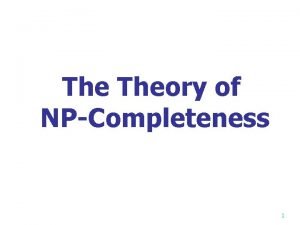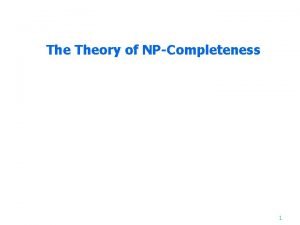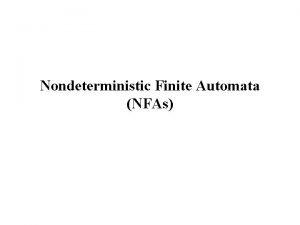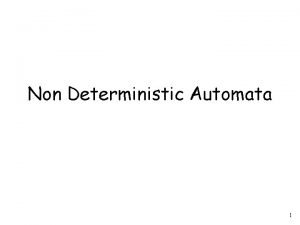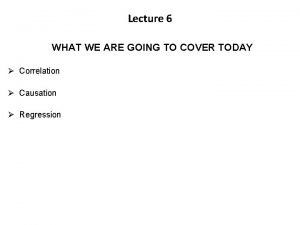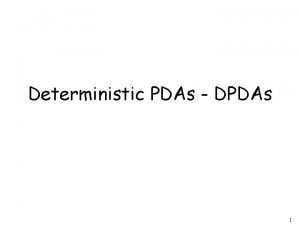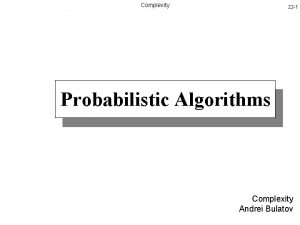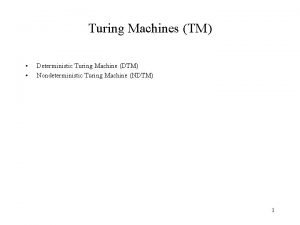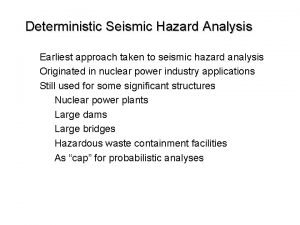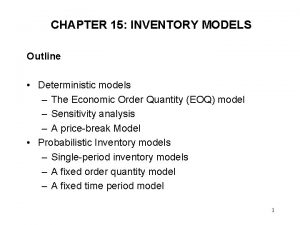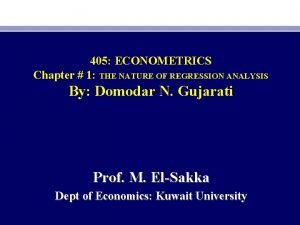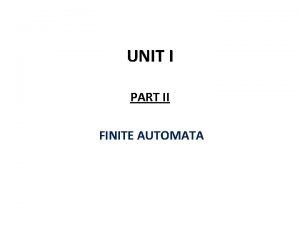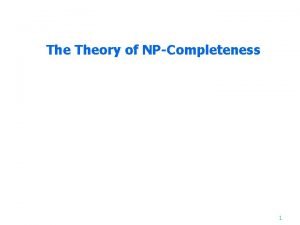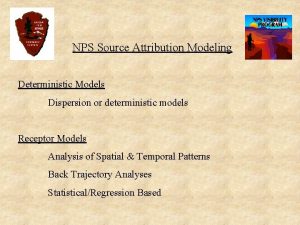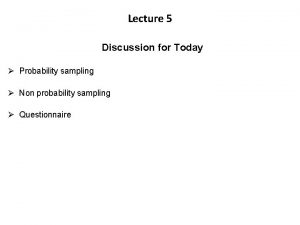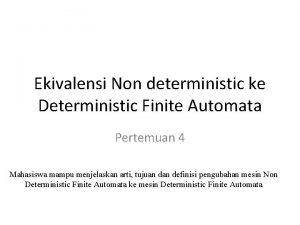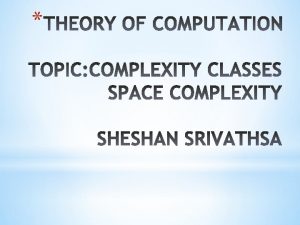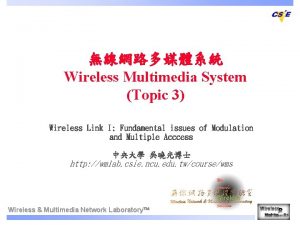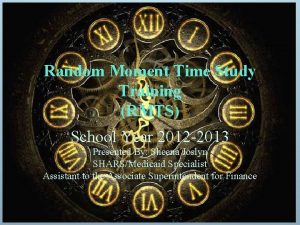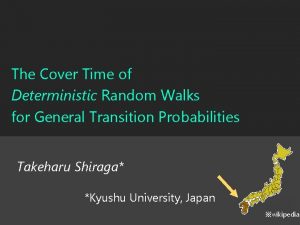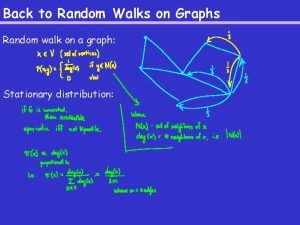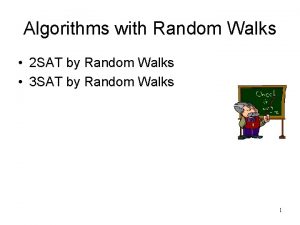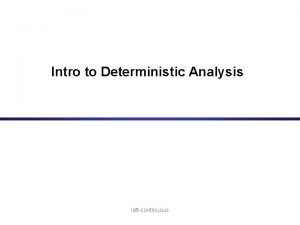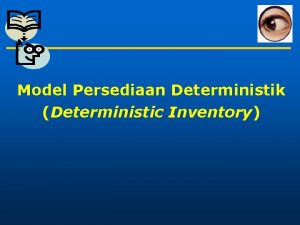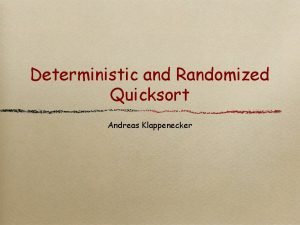The Cover Time of Deterministic Random Walks for























![Det. RWs for general transition probabilities n Rotor-router model [Propp 2000] : deterministic analogy Det. RWs for general transition probabilities n Rotor-router model [Propp 2000] : deterministic analogy](https://slidetodoc.com/presentation_image_h2/a94ae16a99e4da80235400669dbc24d2/image-24.jpg)
































![SRT router [Tijdeman 80, Angel et al. 10] • Ex. 1/2 1/3 b a SRT router [Tijdeman 80, Angel et al. 10] • Ex. 1/2 1/3 b a](https://slidetodoc.com/presentation_image_h2/a94ae16a99e4da80235400669dbc24d2/image-57.jpg)

- Slides: 58

The Cover Time of Deterministic Random Walks for General Transition Probabilities Takeharu Shiraga* *Kyushu University, Japan ※wikipedia

Network exploration by random walks n This work is corresponding to the network exploration by random walks and deterministic random walks n Random walks are well studied for an approach to the network exploration, since its simplicity, locality, and robustness to change in graphs. 2

Simple random walks on a graph At each time step, a token chooses a neighboring vertex u. a. r. , and move to it, repeatedly. t=3 t=2 t=1 t=0 3

Cover time 4

The cover time of simple random walks 5

The cover time of simple random walks x y 6

Summary (so far) Simple RW k=1 7

k-simple random walks on a graph n k-simple random walks : k-independent parallel simple random walks At each time step, each token random walks independently. t=3 t=2 t=1 t=0 8

9 Cover time of k-simple random walks k times speed up for small k D: diameter of G

Summary (so far) Simple RW k=1 10

Deterministic random walk n From the view point of the deterministic graph exploration, the rotor-router model is well studied recently n Rotor-router model [Propp 2000] : deterministic analogy of a simple random walk 11

12 Idea of the rotor-router model n SRW : each token moves randomly n Rotor-router : we define arbitrary ordering, tokens move by the ordering 3 1 2

13 Rotor-router model 3 1 2 1 1 2 4 3 4 1 3 2 3 3 2 2 2 1 2 3 2 4 1 3 2 1 1 2

14 Rotor-router model At each time step, each token moves according to rotor-router t=0 3 1 2 1 1 2 4 3 4 1 3 2 3 3 2 2 2 1 2 3 2 4 1 3 2 1 1 2

15 Rotor-router model At each time step, each token moves according to rotor-router t=4 t=3 t=2 t=1 t=0 1 3 2 1 4 2 3 2 1 1 4 2 3 3 1 3 2 1 2 4 3 1 2 3 1 1 2 2 1 2

The cover time of rotor-router models (k=1) 16 m=|E|, D: diameter

17 k times speed up for small k

18 Summary (so far) Simple RW Det. simple RW (RRM) k=1

General transition probabilities

20 General transition probabilities n Transition probabilities are uniform (simple) so far n [Ikeda et al. 03] took an approach for speeding up, which uses modified transition probabilities (not simple RW). weighted RW v 1/3 1/3 P(v, c) P(v, a) a P(v, b) b c

General (not simple) random walks 1/3 1/3 21

General (not simple) random walks 22

23 Summary (so far) Simple RW Det. simple RW (RRM) k=1 Not simple RW
![Det RWs for general transition probabilities n Rotorrouter model Propp 2000 deterministic analogy Det. RWs for general transition probabilities n Rotor-router model [Propp 2000] : deterministic analogy](https://slidetodoc.com/presentation_image_h2/a94ae16a99e4da80235400669dbc24d2/image-24.jpg)
Det. RWs for general transition probabilities n Rotor-router model [Propp 2000] : deterministic analogy of simple random walks n Deterministic analogy of general random walks n Stack walk [Holroyd & Propp 10] n SRT-router model, Billiard router model [S. et al. 13] 24

25 Billiard sequence a, b, a b c c

Billiard sequence 26 a b c Billiard sequence of the uniform distribution is rotor-router

Billiard-router model At each time round, each token moves by billiard-router v 1/2 a 1/6 1/3 b c 27

Motivation and our result 28 n Nothing is known about the cover time of the deterministic random walks for general transition probabilities Results n We obtain the first result of an upper bound of the cover time for the deterministic random walks for general transition probabilities n Our upper bound improves the previous results of the rotor-router model

29 Summary (so far) Simple RW Det. simple RW (RRM) k=1 Not simple RW Not simple det. RW (BRM) ? ? ?

30 Our result Simple RW Det. simple RW (RRM) k=1 Not simple RW Not simple det. RW (BRM)

Main Result

32 Main result for simple RWs

Main result 33 n We obtain the first upper bound for deterministic random walks for general transition probabilities ! ※ This upper bound also holds for stack walks, SRT-router

34 Corollary for simple RWs

Upper bound for the rotor-router 35 n Our theorem improves the previous result of the rotor-router !

36 Our result Simple RW Det. simple RW (RRM) k=1 Not simple RW Not simple det. RW (BRM)

Idea of the proof

Idea of the proof Discrepancy between the visit frequency of det. RW and the expected visit frequency of RM Cover time of det. RWs 38

Visit frequency 39

40 Intuition of the visit frequency lemma 4 10/3 10 v 3 10/3 3333 3334 10000 v 10000/3 3333 10000/3 |4 -10/3|<1 |3334 -10000/3|<1 |3 -10/3|<1 |3333 -10000/3|<1 |Det. flow – expected flow|<c for any number of tokens and time. |Det. visit frequency – expected visit frequency|<c

Visit frequency and the cover time 41

Visit frequency and the cover time 42

Visit frequency and the cover time 43 n w has been visited ! n We obtain the upper bound of the cover time if the discrepancy between visit frequencies is upper bounded.

Conclusion

45 Summary of this talk Simple RW Det. simple RW (RRM) k=1 Not simple RW Not simple det. RW (BRM)

Future works 46

Thank you for the attention ! The Cover Time of Deterministic Random Walks for General Transition Probabilities Takeharu Shiraga* *Kyushu University, Japan

48 Summary of this talk Simple RW Det. simple RW (RRM) k=1 Not simple RW Not simple det. RW (BRM)

memo

Hitting time and cover time 50

51 Markov chain • Ex. Transition diagram of P 1/2 a 1/3 1/2 b 1/6 1/2 1/2 c

52 Markov chain V : finite state set P : transition matrix of V π : stationary distribution of P ü probability distribution s. t. πP = π holds Ex. Transition diagram of P 1/2 a 1/3 1/2 π = (1/2, 5/18, 2/9) b 1/6 1/2 1/2 c

Limit theorem The following theorem is fundamental ※It is often assumed that P is ergodic, defined as follows. 53

54 Mixing time Let’s introduce a characterization of ``convergence speed’’ ü Thus, after t steps s. t. t>τ(ε), we can get samples according to approximate π within ratio ε ! ( in the sense that total variation distance ) (L 1 -disc. )

Billiard router model • Ex. 1/2 1/3 b a c 1/6 a, b, a, a, b, c, a, b, a, … c 55

The discrepancy of sequences 56
![SRT router Tijdeman 80 Angel et al 10 Ex 12 13 b a SRT router [Tijdeman 80, Angel et al. 10] • Ex. 1/2 1/3 b a](https://slidetodoc.com/presentation_image_h2/a94ae16a99e4da80235400669dbc24d2/image-57.jpg)
SRT router [Tijdeman 80, Angel et al. 10] • Ex. 1/2 1/3 b a c 1/6 a, b, … c 57

The discrepancy of sequences 58
 The man of integrity walks securely
The man of integrity walks securely Random walks
Random walks Latent strabismus
Latent strabismus Vike vicente
Vike vicente Maddox rod test procedure
Maddox rod test procedure Random assignment vs random sampling
Random assignment vs random sampling Random assignment vs random selection
Random assignment vs random selection Elapsed time
Elapsed time Spanning tree of a graph
Spanning tree of a graph Non deterministic algorithm for sorting
Non deterministic algorithm for sorting Non-deterministic algorithm
Non-deterministic algorithm Deterministic demand vs stochastic demand
Deterministic demand vs stochastic demand What is social learning theory
What is social learning theory Non-deterministic algorithm
Non-deterministic algorithm Finite automata
Finite automata Convert nfa to dfa
Convert nfa to dfa Statistical versus deterministic relationships.
Statistical versus deterministic relationships. Deterministic games examples
Deterministic games examples Deterministic seismic hazard analysis
Deterministic seismic hazard analysis Pda to dpda
Pda to dpda Andrei bulatov
Andrei bulatov Deterministic operations research
Deterministic operations research Nondeterministic turing machine
Nondeterministic turing machine Agent a chapter 2
Agent a chapter 2 Deterministic definition
Deterministic definition Is inventory a stock
Is inventory a stock Econometrics chapter 1
Econometrics chapter 1 Gameplay
Gameplay Deterministic game
Deterministic game Deterministic cross device tracking
Deterministic cross device tracking Deterministic finite automaton
Deterministic finite automaton Non deterministic algorithm for sorting
Non deterministic algorithm for sorting Deterministic attribution
Deterministic attribution Statistical vs deterministic relationship
Statistical vs deterministic relationship Ekivalensi
Ekivalensi A deterministic turing machine is: *
A deterministic turing machine is: * Deterministic
Deterministic State yang merupakan non-deterministic ditandai dengan
State yang merupakan non-deterministic ditandai dengan Deterministic finite state automata
Deterministic finite state automata Deterministic and stochastic inventory models
Deterministic and stochastic inventory models Two nations live on the edge answers
Two nations live on the edge answers Random moment time study
Random moment time study Random moment time study texas
Random moment time study texas Iso 22301 utbildning
Iso 22301 utbildning Typiska drag för en novell
Typiska drag för en novell Nationell inriktning för artificiell intelligens
Nationell inriktning för artificiell intelligens Returpilarna
Returpilarna Shingelfrisyren
Shingelfrisyren En lathund för arbete med kontinuitetshantering
En lathund för arbete med kontinuitetshantering Personalliggare bygg undantag
Personalliggare bygg undantag Tidbok yrkesförare
Tidbok yrkesförare Sura för anatom
Sura för anatom Densitet vatten
Densitet vatten Datorkunskap för nybörjare
Datorkunskap för nybörjare Tack för att ni lyssnade bild
Tack för att ni lyssnade bild Debattartikel mall
Debattartikel mall För och nackdelar med firo
För och nackdelar med firo Nyckelkompetenser för livslångt lärande
Nyckelkompetenser för livslångt lärande Påbyggnader för flakfordon
Påbyggnader för flakfordon








